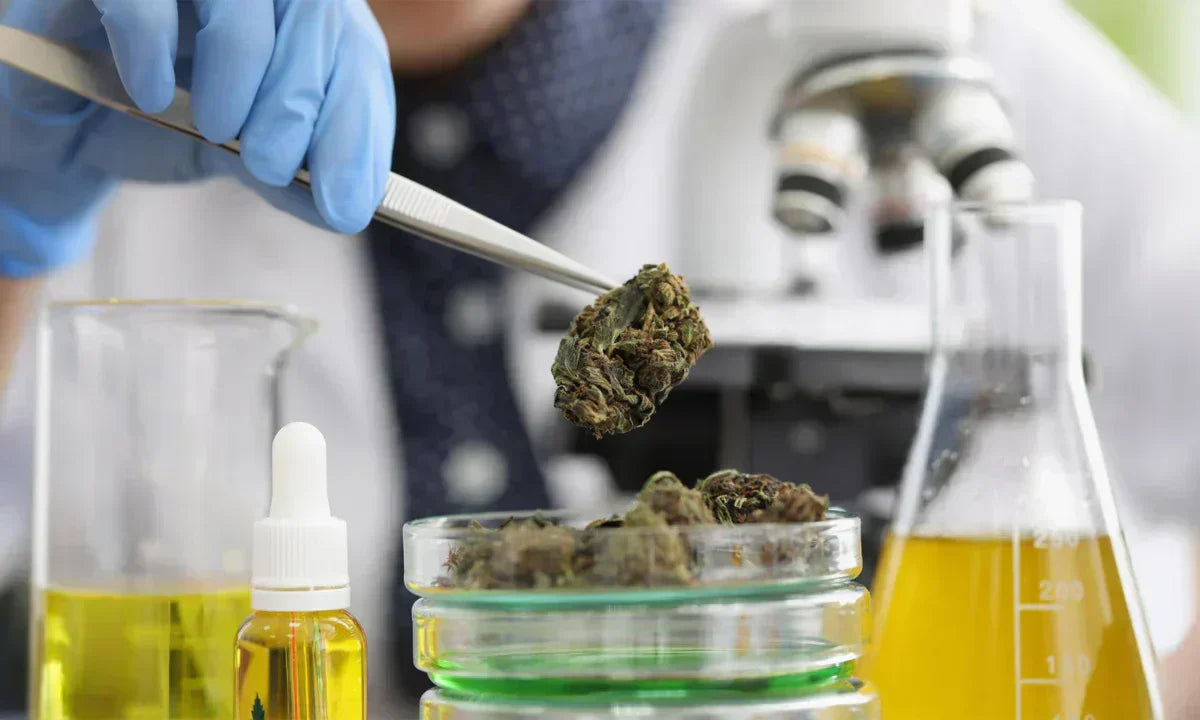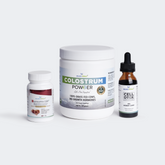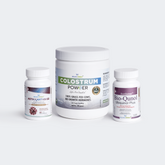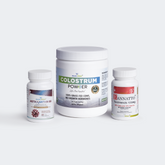How Long Does Nicotine Stay In Your System? Timeline, Tests
Estimated Reading Time: 7 minutes
|You’ve finally made the decision—or maybe you’re still thinking about it. Whether you're quitting cigarettes, curious about your last puff, or trying to pass that upcoming insurance test, one question always comes up:
“How long does nicotine stay in your system?”
Short answer: It depends.
Long answer: Let’s talk.
First, What Happens When You Take a Puff?
Nicotine is a stimulant found in tobacco plants. It’s the stuff that gives that buzz—and it’s highly addictive. Once it enters your body (from smoking, vaping, patches, gum, etc.), it moves quickly into your bloodstream—in as little as 10 seconds.
But here’s the twist: nicotine itself doesn’t hang out too long.
Instead, your body breaks it down into something called cotinine, a longer-lasting substance used to measure nicotine levels in most tests.
Quick Science Break:Nicotine:
-
Fast-acting but quick to fade
-
Cotinine: Slower to leave, easier to detect
-
Tests don’t just look for nicotine—they look for cotinine
How Long Does Nicotine Stay in Your System?
Here’s the no-fluff timeline, based on the test type and individual factors like age, hydration, and frequency of use.
-
Urine Tests
The go-to test for checking nicotine use.
-
Cotinine can be detected in urine for at least 3 days
-
In heavy users or regular smokers, it may linger for up to 8 weeks
(Yep, even if you haven’t touched a cigarette in a while!)
-
Blood Tests
Not as common for casual screenings, but still used in some medical settings.
-
Nicotine itself is mostly gone within a few hours to a day.
-
Cotinine may last longer and can be detected in blood for about 1–2 days after use
But here's the tricky part; blood tests are less sensitive. So, they can sometimes miss it or give false alarms.
-
Saliva Tests
Quick, easy, and increasingly popular.
-
Can usually detect nicotine/cotinine for up to 7 days
-
Less effective for light or one-time smokers
-
Hair Tests
This is where things get intense.
-
Can detect nicotine exposure weeks, months—even up to a year
-
Not just for smokers: even secondhand smoke might show up: yep, the kind from just sitting near a smoker!
Helpful Fact:
Cotinine has a half-life of around 16–20 hours, which makes it a super helpful marker for short-term tobacco exposure.
Factors That Affect How Long Nicotine Stays in Your Body
Your body isn’t a copy-paste version of anyone else’s. Here's what changes the game:
-
How Often You Smoke: Daily? Weekly? One puff at a party?
-
Product Type: Cigarettes, vapes, patches, gum—they’re absorbed differently.
-
Metabolism: Fast metabolizers eliminate nicotine faster.
-
Age & Liver Health: Slower liver = slower processing.
-
Hydration & Diet: Low water and junk food? Slows it all down.
-
Surprise: Women metabolize nicotine faster than men, especially if they’re on estrogen-containing birth control.
Myth Buster:
“I can flush out nicotine by drinking gallons of water.”
Not quite. Water helps, but your liver still calls for the shots. No magic cleanse here.
Symptoms of Nicotine Leaving Your System
If you’ve just quit (go you!), expect some withdrawal symptoms: usually peaking in the first 72 hours:
-
Headaches
-
Irritability
-
Cravings
-
Trouble sleeping
-
Mood swings
The first week is the toughest, but the body starts balancing out after that. Within one day of quitting, your bloodstream is almost nicotine-free; carbon monoxide levels drop, and oxygen flow improves.
Your body wants to heal. You just have to give it the space.
Tips to Speed Up the Clearing Process (Naturally)
(Just know—you can’t erase nicotine overnight.)
Here’s what might help:
-
Stay Hydrated: Water = flushing out toxins (aim for 8–10 glasses a day)
-
Eat Clean: Leafy greens, citrus fruits, and cruciferous veggies (like broccoli) support liver detox. Vitamin C may help speed up the process by boosting your body’s natural detox pathways.
-
Move Your Body: Light exercise improves circulation and metabolism
-
Sleep Well: Recovery happens overnight—don’t shortchange it
-
Avoid re-exposure – That includes vaping, secondhand smoke, even nicotine patches if you’re quitting cold turkey
“Detox” drinks?
Honestly, save your money. Most are just expensive water with marketing. Your body is already built to detox; it just needs support.
What About Nicotine Replacement?
Gum, lozenges, patches: they all contain nicotine. So yes, they’ll show up on a test.
But here’s the catch: if you’re using it with medical guidance or as part of a stop-smoking program, it’s not the same red flag as cigarettes or vaping. Still, mention it to your doctor or HR team if you’re being tested.
Should You Be Worried About a Test?
If you’re quitting for your health: no worries, time is on your side.
But if you’re being tested for life insurance, work, or medical clearance, and you're close to the date... it’s best to be honest upfront. Explaining the use of a patch or gum may actually help your case instead of hurting it.
Pro Tip
If you’re quitting, consider logging your milestones. “Day 3: Survived a donut craving without a cigarette.” You’ll be amazed at how far you'll come in just a week.
Final Word: You’ve Got This
Quitting nicotine; or even thinking about it; isn’t just a physical change. It’s a mindset shift. If you're feeling off during the process, give yourself some breathing room (literally and mentally).
No need to rush or compare your timeline to anyone else's. The fact that you're paying attention to how long does nicotine stays in your system already means you're ahead of the game.
Your body keeps the score, but you’re still the coach.
Stick with it. Flush it out. You've got this.
Key Takeaways
-
Wondering how long does nicotine stay in your system? Nicotine may clear in a day, but cotinine can linger for days to weeks, especially in heavy users.
-
Urine tests are most common and can detect use up to 8 weeks later in some cases.
-
Hair tests can show exposure for months—or even up to a year.
-
Hydration, diet, metabolism, and use frequency all impact how long nicotine stays in your system.
-
Quitting isn’t easy, but your body starts recovering fast: sometimes within hours.
-
If you're using nicotine replacements, they’ll show up on tests too.
Disclaimer: This blog is for informational purposes only and does not provide medical advice. Always consult a healthcare professional before making changes to your diet or health routine. Individual results may vary.
References
-
Department of Health and Aged Care. Effects of Smoking and Tobacco. Australian Government Department of Health and Aged Care. (2024). https://www.health.gov.au/topics/smoking-vaping-and-tobacco/about-smoking/effects (Accessed on: 14 June 2025)
-
Tan X, Vrana K, Ding ZM. Cotinine: Pharmacologically Active Metabolite of Nicotine and Neural Mechanisms for Its Actions. Frontiers in Behavioral Neuroscience. (2021);15:758252. https://doi.org/10.3389/fnbeh.2021.758252 (Accessed on: 14 June 2025)
-
Sandhu A, Hosseini SA, Saadabadi A. Nicotine Replacement Therapy. PubMed. (2023). https://www.ncbi.nlm.nih.gov/books/NBK493148/ (Accessed on: 14 June 2025)
-
Gormsen J, Hjørne F, F. Helgstrand F. Cotinine Test in Evaluating Smoking Cessation at the Day of Bariatric Surgery. Scandinavian Journal of Surgery. (2019);109(3):265-268. https://doi.org/10.1177/1457496919866017 (Accessed on: 14 June 2025)
-
Kawasaki Y, Li YS, Ootsuyama Y, Nagata K, Yamato H, Kawai K. Effects of smoking cessation on biological monitoring markers in urine. Genes and Environment. 2020;42(1). https://doi.org/10.1186/s41021-020-00165-z (Accessed on: 14 June 2025)
-
U.S. Environmental Protection Agency. Serum Cotinine.https://cfpub.epa.gov/roe/indicator_pdf.cfm?i=26 (Accessed on: 14 June 2025)
-
Dhavan P, Bassi S, Stigler MH, et al. Using Salivary Cotinine to Validate Self-Reports of Tobacco Use by Indian Youth Living in Low-Income Neighborhoods. Asian Pacific Journal of Cancer Prevention. (2025);12(10):2551. https://pmc.ncbi.nlm.nih.gov/articles/PMC3310162/ (Accessed on: 14 June 2025)
-
Marques H, Cruz-Vicente P, Rosado T, Barroso M, Passarinha LA, Gallardo E. Recent Developments in the Determination of Biomarkers of Tobacco Smoke Exposure in Biological Specimens: A Review. International Journal of Environmental Research and Public Health. (2021);18(4):1768. https://doi.org/10.3390/ijerph18041768 (Accessed on: 14 June 2025)
-
Kumboyono K, Chomsy IN, Hakim AK, et al. Detection of Vascular Inflammation and Oxidative Stress by Cotinine in Smokers: Measured Through Interleukin-6 and Superoxide Dismutase. International Journal of General Medicine. (2022);Volume 15:7319-7328. https://doi.org/10.2147/ijgm.s367125 (Accessed on: 14 June 2025)
-
Rubinstein ML, Shiffman S, Rait MA, Benowitz NL. Race, Gender, and Nicotine Metabolism in Adolescent Smokers. Nicotine & Tobacco Research. (2012);15(7):1311-1315. https://doi.org/10.1093/ntr/nts272 (Accessed on: 14 June 2025)
-
National Cancer Institute. Handling Withdrawal Symptoms & Triggers When You Decide to Quit. National Cancer Institute. (2022) https://www.cancer.gov/about-cancer/causes-prevention/risk/tobacco/withdrawal-fact-sheet (Accessed on: 14 June 2025)
-
Better Health Channel. What to expect when you quit smoking. Vic.gov.au.( 2012) https://www.betterhealth.vic.gov.au/health/healthyliving/What-to-expect-when-you-quit-smoking (Accessed on: 14 June 2025)
-
Centers for Disease Control and Prevention. How to Use Nicotine Lozenges | Quit Smoking | Tips From Former Smokers. www.cdc.gov. (2021) https://www.cdc.gov/tobacco/campaign/tips/quit-smoking/quit-smoking-medications/how-to-use-quit-smoking-medicines/how-to-use-the-nicotine-lozenge.html (Accessed on: 14 June 2025)




































